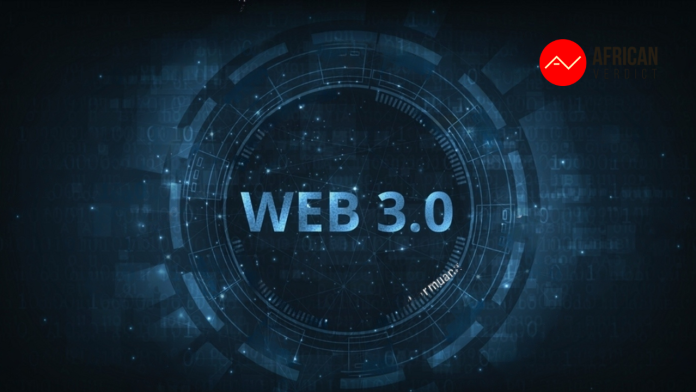The impact of the internet on our lives has been significant as it has continued to evolve. It has influenced various aspects of our lives, including what we read, buy, watches for entertainment, and how we communicate.
The internet seems to have access to a vast amount of information about us, including our preferences, friends, shopping habits, and even our favorite cat videos. While this level of knowledge could be viewed positively or negatively, it has led to concerns about who has control and access to our personal data.
Big tech companies have increasingly faced scrutiny over their use and potential misuse of personal information, compounded by their dominant market position in the internet landscape. As of 2019, Google (Alphabet), Amazon, Meta (previously Facebook), Netflix, Microsoft, and Apple accounted for 43% of total internet traffic.
While personalized content can be convenient, it can also be intrusive. The influence of these tech giants is particularly pronounced in their respective fields, with Google holding an 87% share of the global search market, and Meta’s four major platforms (Facebook, Whatsapp, Messenger, and Instagram) reaching a combined 3.6 billion unique users.
Reclaiming big tech’s Power
Web3 is a new iteration of the internet that harnesses blockchain to “decentralize” management thus reducing the control of big corporations, such as Google or Meta, and making it more democratic. It is defined by open-source software, is trustless – doesn’t require the support of a trusted intermediary – and is permissionless (it has no governing body).
Web3 draws its name as the third iteration of the internet. The first iteration of the internet consisted of read-only, static webpages (view a BBC homepage from August 2000 as an example). Web 2.0 added the ability to interact with and produce content, making activities such as social media and online banking and shopping possible.
The concept of Web3 has been around for over half a decade, originally coined by Ethereum co-founder Gavin Wood in 2014. It gained traction, however, in 2021 with the proliferation of blockchain technologies, expanding NFT markets, venture capital investments, and ongoing calls to reign in the power of big tech.
Web3 rise in a practice
The current internet, Web 2.0, relies on systems and servers owned largely by big corporations, raising concerns over system vulnerability and control. When Meta’s associated platforms suffered a global outage in early October – exacerbated by the centralization of its servers – there were calls to adopt Web3 and its decentralized architecture.
Proponents of adopting Web3 also advocate for internet activity to be governed by the many rather than the incentives and biases of the few. After all, why should large corporations control our data?
In a Web3 world, activities and data would be hosted on a network of computers using blockchain rather than corporate servers. The internet would likely have the same look and feel, at least initially, but your internet activities would be represented by your crypto-wallet and websites hosted through decentralized applications (dapps), digital applications run on a blockchain network.
The definition of Web3 can differ by source; however, some consistent features will likely be embedded into the system:
Anonymous single-sign-on
Anonymous single-sign-on will allow one username and authentication method across all websites and accounts, rather than individual logins for each site. This login would not require you to relinquish control of sensitive personal data.
This feature differs from current Facebook or Google single-sign-on, which grants access to your personal data until you revoke this access. However, all transactions on the blockchain are public, so technically, everyone can see the assets and data assigned to a specific wallet. This transparency is also why wallets are anonymous, identified only by an address, not a name unless the individual chooses to assign personal details to their wallet(s).
Individual ownership and tokenization
Activities that contribute to Web3 are rewarded by a token (either NFT or fungible, e.g. cryptocurrency) to incentivize participation and distribute ownership.
For example, when posting a new social message, an NFT representing that post would be “minted” (generated) and stored as an asset in a crypto wallet. This token represents ownership over the message, which can then be traded with others via their wallets. If the post is popular, the returns will go to the token owner rather than to the platform it’s hosted on.
Self-governing
Along with the distribution of ownership is the distribution of decision-making power. Without a central authority, blockchains rely on the entire network to verify an activity via consensus. However, specific systems, such as those used in decentralized autonomous organizations can be established to democratize decision-making based on the quality or volume of a user’s investment into a site or app.
For example, based on their share of ownership of a platform, users can vote on the rules that govern a site (e.g. what classifies as misinformation). These rules are then executed by smart contracts.
Web3 is in its infancy
While several Web3 apps exist, there is no broad Web3 infrastructure like the current Internet. Significant widespread development, consolidation, and accessibility efforts are needed before the Web3 vision is realized, if at all.
There are many considerations for widespread adoption, meaning Web3 may not live up to the hype promised. Questions remain, such as can Web3 scale sustainably? Will Web3 really deliver online sovereignty? Can we educate and shift the culture of the masses to understand Web3?
There are no one-word answers to these questions, but we look forward to unraveling the potential and challenges they elude to in future articles.



